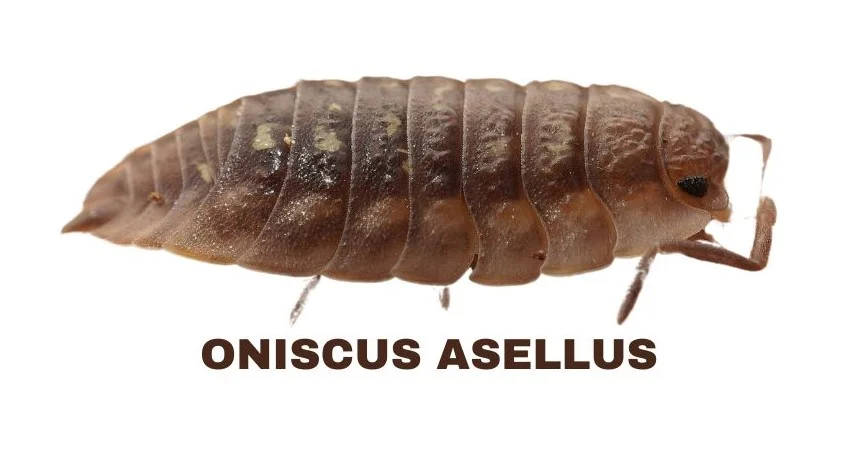Oniscus asellus, commonly known as Wood-louse or Millipedes, is a species of crustacean belonging to the order Isopoda.
It is often used in homoeopathy for its distinct diuretic properties, making it useful in treating conditions like dropsies and asthmatic conditions with bronchial catarrh.

Table of Contents
ToggleSOURCE INFORMATION
- Classification: Oniscus asellus belongs to the crustacean class and is part of the order Isopoda.
- Habitat: Found in moist and shaded environments such as forests, gardens, and under rocks or logs.
- Diet: Woodlice feed on decaying organic matter and play a role in decomposition processes in their ecosystem.
Preparation of Homoeopathic Remedy
- Collection: Woodlice are collected from their natural habitat.
- Processing: The collected specimens undergo maceration, a process of grinding or crushing, to extract their medicinal properties.
- Dilution and Succussion: The extract is diluted and succussed, a process of vigorous shaking, to potentize the remedy.
- Resulting Remedy: The potentized remedy of Oniscus asellus is then used in homoeopathy to treat various conditions.
Medical Applications
- Diuresis: Oniscus asellus is known for its diuretic properties, making it useful in conditions related to increased urine production.
- Respiratory Issues: The remedy is also employed in treating respiratory ailments such as asthma and bronchial catarrh.
KEY CHARACTERISTICS
- Diuretic properties: Oniscus asellus is known for its ability to stimulate diuresis, making it valuable in treating conditions associated with fluid retention, such as dropsies.
- Asthmatic conditions: It is indicated for asthmatic conditions accompanied by bronchial catarrh, where there is excessive mucus production in the airways.
- Head symptoms: Symptoms include boring pain behind the right ear, violent pulsation of arteries, and painful pressure above the root of the nose.
- Stomach symptoms: Persistent pressure in the cardiac orifice and vomiting may be present.
- Abdominal symptoms: Abdomen may be distended with meteorism, and there may be severe colic.
- Urinary symptoms: Cutting and burning in the urethra, tenesmus of the bladder and rectum, with absence of stool and urine may occur.
MODALITIES
- Symptoms may be worse on the right side.
- Symptoms may be aggravated by pressure or motion.
WHAT ARE MODALITIES IN HOMOEOPATHY?
RELATIONSHIP WITH OTHER DRUGS
- Pothos foetidus and Cantharis are drugs that may be compared with Oniscus asellus in terms of their symptomatology and therapeutic indications.
DOSE
- The sixth potency is commonly recommended for Oniscus asellus, administered according to homoeopathic prescribing guidelines.
Frequently Asked Questions
What are the main therapeutic uses of Oniscus asellus?
- Oniscus asellus is mainly used for its diuretic properties, particularly in treating dropsies, and for asthmatic conditions with bronchial catarrh.
How is Oniscus asellus prepared for use in homoeopathy?
- It is prepared using traditional homoeopathic methods, involving dilution and succussion of the substance to create potentized remedies.
Meaning of Difficult Words
- Diuretic: A substance that promotes the production of urine, often used to reduce fluid retention in the body.
- Catarrh: Inflammation of a mucous membrane, especially of the respiratory tract, causing excessive mucus production.
